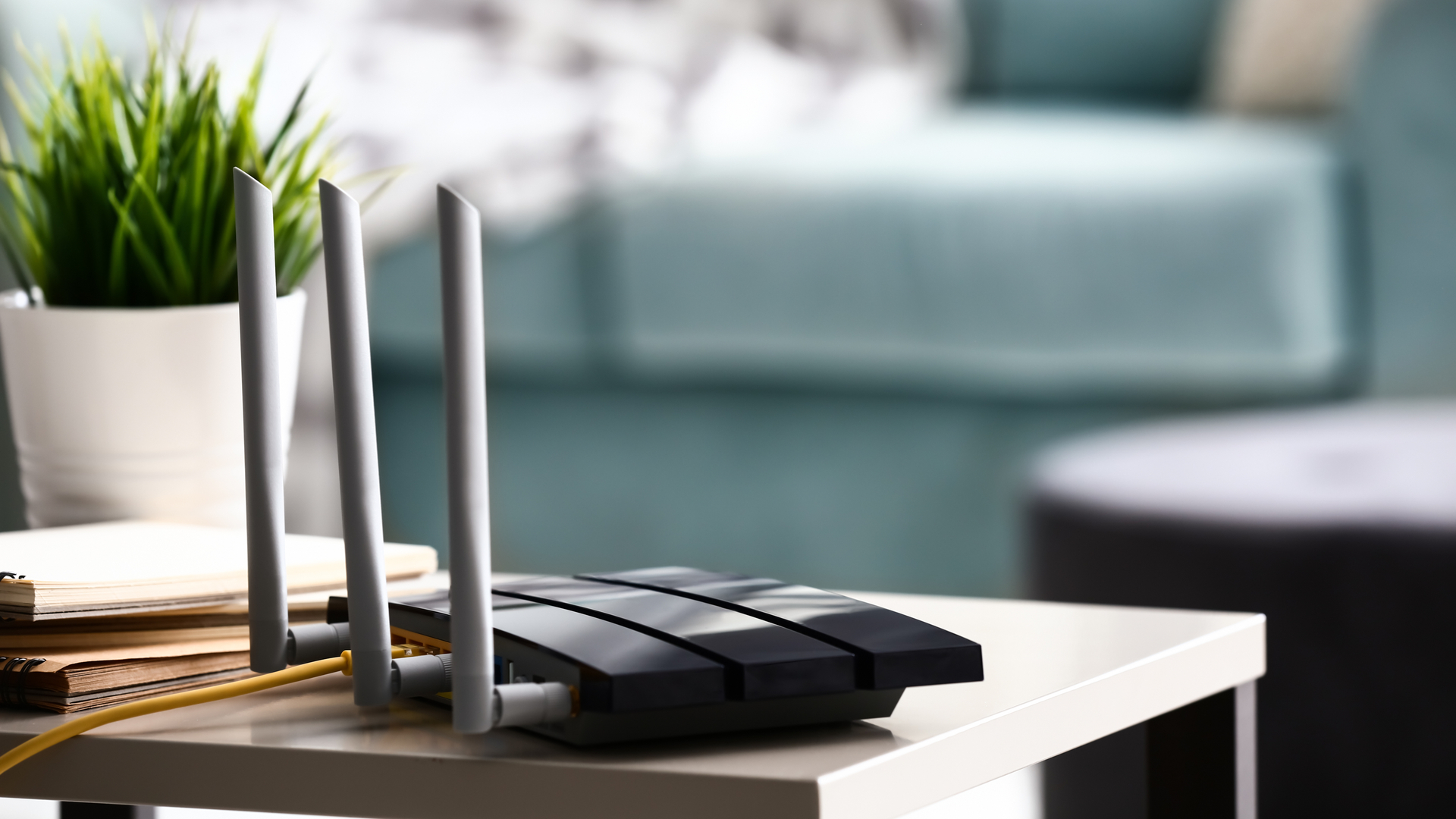What is a router and how does it work?
The role of a router in networking goes beyond simply allowing your business to access the web and stay connected with colleagues


You’ve signed up for internet, your installer has arrived, and now you’re faced with a box with blinking lights. Routers can come in all shapes and sizes, with different models offering varying levels of network performance and all kinds of features, from those that improve range to sharpening up network security.
Regardless of the specific router you're looking for, its role in networking is an essential one, promising unfettered access to the web. There’s more than meets the eye, though, and there are several ways your organisation can make the most of the router and unlock its potential.
How does a router work?
To explain what a router in networking is, we can suggest thinking of your business’ router as the air traffic control of your configuration, sending data packets around your network and out to the wider web.
Whether that’s interfacing between your devices and the internet, or allowing data traffic between your devices – like casting content to a television or using a server or network attached storage (NAS) device to share your data between computer – the router is at the centre of the action.
A router identifies the IP address of devices in order to know exactly where to send data that’s being distributed by a user. It’s not just about knowing which device is where on your network, but also about knowing how best to distribute that data.
For example, on routers that have two bands, usually 2.4 and 5GHz, one band may be tasked with smaller internet of things (IoT) devices, while the larger band can be assigned by the owner to devices that hog more bandwidth, like workstations.
It’s worth noting that the words modem and router are sometimes used interchangeably. A modem, the first device of its kind when computing became more accessible, allows for a single connection. It’s the front door, so to speak, between your network and the wider web.
Get the ITPro daily newsletter
Sign up today and you will receive a free copy of our Future Focus 2025 report - the leading guidance on AI, cybersecurity and other IT challenges as per 700+ senior executives
A router, on the other hand, takes that connection and allows your network’s devices to talk to each other and do things like scanning the web for advice and guidance. In other words, in modern configurations, the two parts and functions are combined into your router.
What are the different types of routers?
First, let’s explain the difference between a wired router and wireless router. A wired model allows connections from its ports – acting more like a network switch, but does not have a way to connect wirelessly to your devices. While a wired connection, similar to the one from the ethernet jack in your wall, will be faster, it does allow for less flexibility. A wireless router allows for wireless connections and is the one we’re most familiar with. The models often provided by internet service providers (ISPs) often function as wireless routers with a couple of wired ports to boot.
From there come three key types of routers. The one we’re most familiar with, the one you’re likely to have at home, is a core router. Its job is to be the main hub for one network’s activity. If we’re stretching this analogy even further, the core router is the single staffer on the runway using batons to point your network traffic in the right direction.
RELATED RESOURCE

Build innovation, intelligence and sustainability into your industrial processes, with the cloud
EMEA Manufacturing & Industrial Symposium 2022
That’s different from an edge router. Its job is to connect with other networks and work at the boundary of the network. Instead of being clad in a rain jacket on the tarmac, the edge router is working with its friends in the IT environment, equivalent to air traffic control. Your typical home office network won’t need an edge router, generally speaking, but in a deployment like a huge warehouse or a university campus, edge routers are needed to manage traffic across a large space or a place with a large volume of network traffic and devices.
The third main type of router is a virtual router. Rather than being a traditional physical box you might associate with the label, a virtual router is run from a more typical computer or server running specialised software. With this added flexibility, virtual routers can also run virtual private network (VPN) software, allowing you to make sure all of the traffic that runs through that router is encrypted with an extra layer of security.
What factors are important in a good router?
The first thing to consider, like any tech purchase, is what exactly you need the router to do. You don’t need to make a mountain out of a molehill and buy something that could service a massive warehouse when you’re working in a tiny office. You’ll want to make sure that it’s up to the latest standard that your devices can support – the latest being Wi-Fi-6 or Wi-Fi 6E. You also want to keep in mind what speed your network connection is. No matter how competent the router it’s only as fast as your incoming connection can put it.
As for weaknesses and pitfalls, you must keep in mind the router’s security features, most of which come thanks to its firmware. While these devices tend to automatically update, routers are susceptible to a distributed denial of service attack (DDoS). This is when a network is flooded with nuisance traffic to throttle its ability to function properly. Businesses, therefore, must adequately safeguard against the potential for such attacks.
Routers also usually come with a default name and password for the administrator privileges that allow you to configure settings. Make sure you are up to date on what security features your router comes with, how you can personalise them, and whether your model is particularly vulnerable to a specific form of attack.
The last concern – and it’s one most people don’t want to talk about – is that any physical piece of hardware is prone to misuse by staff or contractors that are less-than-ethical. It’s best to ensure that checking your router’s settings and activity is part of your regular network maintenance. Don’t just, as the saying goes, set and forget.

John Loeppky is a British-Canadian disabled freelance writer based in Regina, Saskatchewan. He has more than a decade of experience as a professional writer with a focus on societal and cultural impact, particularly when it comes to inclusion in its various forms.
In addition to his work for ITPro, he regularly works with outlets such as CBC, Healthline, VeryWell, Defector, and a host of others. He also serves as a member of the National Center on Disability and Journalism's advisory board. John's goal in life is to have an entertaining obituary to read.
-
 Bigger salaries, more burnout: Is the CISO role in crisis?
Bigger salaries, more burnout: Is the CISO role in crisis?In-depth CISOs are more stressed than ever before – but why is this and what can be done?
By Kate O'Flaherty Published
-
 Cheap cyber crime kits can be bought on the dark web for less than $25
Cheap cyber crime kits can be bought on the dark web for less than $25News Research from NordVPN shows phishing kits are now widely available on the dark web and via messaging apps like Telegram, and are often selling for less than $25.
By Emma Woollacott Published